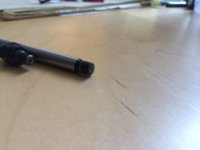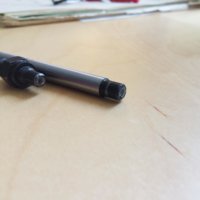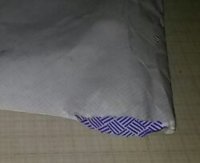Before reinstalling the left side cover, cleaning and regreasing things in there may help. Do the clutch cable service, especially lubing the cable elbow area. Clean (I use old toothbrushes) the worm and worm body screw ramps thoroughly, inspect the worm screw endpoints for burrs and bent/sharp edges that may gouge into the plastic body, followed by a good greasing (I use a teflon based grease there). Then, cleaning and regreasing the shift shaft and the support hole in the cover may help shifter action.
The method I use for adjusting the clutch cable is a little different from the traditional method.
Starting with a cold engine:
First, adjust the handlebar cable adjuster all the way in, gets maximum slack, lengthens cable.
Then adjust the sidecover pushrod adjuster screw to get the desired handlebar lever free-play, about 1/4" - 1/2" at the lever end.
Snug down the lock nut, not hard, just snug, maybe 2-3 ft-lbs. Doesn't take much to hold it, and want to avoid having a stuck adjuster nut.
With other ball/ramp type actuators, there is a definite beginning-to-end zone of operation, and the proper adjustment for these match the XS adjustment method.
However, the XS650 clutch worm doesn't have this type of range restriction. The worm does have a 'bottom' of its travel, but that position usually is with the actuator arm so far forward that the stock clutch cable will never reach, it's too short for that. Plus, you want the lever travel zone to be at the better leverage angles, starting just a bit (about 3/8") before where the actuator arm and the cable form a right (90°) angle. The stock clutch cable is a little short, and having the handlebar adjuster run all the way in will allow you to be in this ideal zone.
The original adjustment method is to run the pushrod screw adjuster in until resistance is felt (all pushrod slack removed), then back out about 1/4 turn, presumably to remove compressive load on the pushrod group (adjuster, pushrod, balls, mushroom rod, pressure plate), so that the clutch can achieve full lockup, avoiding the 'foot riding the clutch' scenario that wears out car clutches.
However, the second half of the factory adjustment method has you adjusting the handlebar lever cable adjuster to get proper lever slack. This not only moves the worm lever arm to a less advantageous leverage zone, but removes the slack that you established at the worm adjuster.
Try it yourself. Adjust the clutch per factory method. Then return to the worm adjuster and see how much slack is left there. I've found it to be virtually nonexistent. So, to regain the lost cable length, came up with this revised method to maximize clutch actuation.
Try this method, and make note of your clutch 'feathering' zone (between where it just starts to grab and achieves full lockup), for both cold and hot conditions. An ideal feathering zone would be at the last 1/3rd of lever travel, and a tolerable zone occurring at the last half of lever travel.
If your cable attach point is at the outer of the long-type worm lever, or if you've installed the MikesXS replacement actuator assembly (which has a different/gentler screw ramp), this feathering zone will widen a bit. Desirable for some (softer engagement), not so for others (too mushy).
Bottom line is that to ensure good clutch disengagement, it's best to have the feathering zone occur only in the last half of lever release. Otherwise, you may not get enough clutch separation to find that elusive neutral.
Other experiments I plan on trying, which may influence finding neutral, involve the other side of the engine, like square-fit of mushroom rod to the pressure plate, polishing of the shift forks guide bar and such.
Outside of that, there's the usual suspects, like oil selection, clutch plate condition, plate-tab gouging in the engagement slots/grooves, sharp edges of the plates' tabs, worn or improper assembly of the clutch washers, worn double-row mainshaft ball-bearing (behind the clutch), imbalanced clutch springs, maybe more.
I hope your situation is limited to the left cover, worm actuator, area.




 ). More so, I could barely move the shifter. Like, my foot/ankle didn't have the strength to pull it up, because it was jammed. I'm hoping this was an anomaly. If not, I doubt it will have anything to do with your rod.
). More so, I could barely move the shifter. Like, my foot/ankle didn't have the strength to pull it up, because it was jammed. I'm hoping this was an anomaly. If not, I doubt it will have anything to do with your rod.